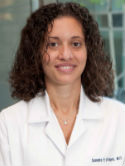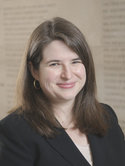| Abstract: |
Both primary and secondary breast angiosarcoma (AS) are characterized by multifocal presentation and aggressive behavior. Despite multimodality therapy, local and distant relapse rates remain high. Therefore, neoadjuvant chemotherapy (NACT) is employed to improve the R0 resection rates and survival, but its benefits remain controversial. Herein, we investigate pathologic and molecular correlates to NACT-induced histologic response in a group of 29 breast AS, 4 primary and 25 radiation-associated (RA). The two NACT regimens applied were anthracycline- and non-anthracycline-based. The pathologic response grade was defined as: I: ≤ 50%, II: 51%–90%, III: 91%–99%, and IV: 100%. An additional 45 primary AS and 102 RA-AS treated by surgery alone were included for survival comparison. The genomic landscape was analyzed in a subset of cases and compared to a cohort of AS without NACT on a paired tumor-normal targeted DNA NGS platform. All patients were females, with a median age of 31 years in primary AS and 68 years in RA-AS. All surgical margins were negative in NACT group. The NACT response was evenly divided between poor (Grades I–II; n = 15) and good responders (Grades III–IV; n = 14). Mitotic count >10/mm2 was the only factor inversely associated with pathologic response. By targeted NGS, all 10 post-NACT RA-AS demonstrated MYC amplification, while both primary AS harbored KDR mutations. TMB or other genomic alterations did not correlate with pathologic response. All four patients with Grade IV response remained free of disease. The good responders had a significantly better disease-specific survival (p = 0.04). There was no survival difference with NACT status or the NACT regimens applied. However, NACT patients with MYC-amplified tumors showed better disease-free survival (p = 0.04) compared to MYC-amplified patients without NACT. The overall survival of NACT group correlated with size >10 cm (p = 0.02), pathologic response (p = 0.04), and multifocality (p = 0.01) by univariate, while only size >10 cm (p = 0.03) remained significant by multivariate analysis. © 2024 Wiley Periodicals LLC. |












